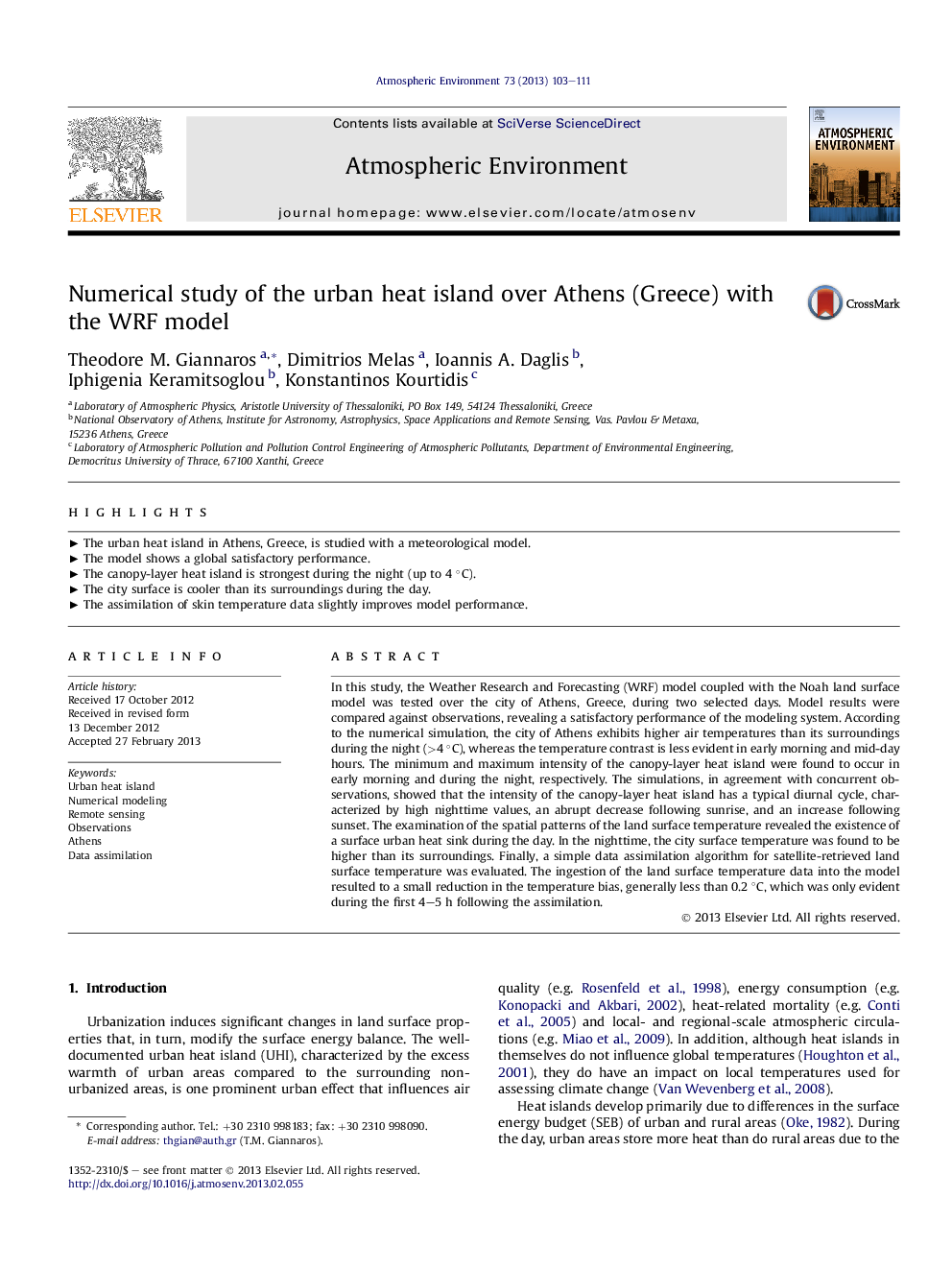| کد مقاله | کد نشریه | سال انتشار | مقاله انگلیسی | نسخه تمام متن |
|---|---|---|---|---|
| 4438226 | 1620398 | 2013 | 9 صفحه PDF | دانلود رایگان |

In this study, the Weather Research and Forecasting (WRF) model coupled with the Noah land surface model was tested over the city of Athens, Greece, during two selected days. Model results were compared against observations, revealing a satisfactory performance of the modeling system. According to the numerical simulation, the city of Athens exhibits higher air temperatures than its surroundings during the night (>4 °C), whereas the temperature contrast is less evident in early morning and mid-day hours. The minimum and maximum intensity of the canopy-layer heat island were found to occur in early morning and during the night, respectively. The simulations, in agreement with concurrent observations, showed that the intensity of the canopy-layer heat island has a typical diurnal cycle, characterized by high nighttime values, an abrupt decrease following sunrise, and an increase following sunset. The examination of the spatial patterns of the land surface temperature revealed the existence of a surface urban heat sink during the day. In the nighttime, the city surface temperature was found to be higher than its surroundings. Finally, a simple data assimilation algorithm for satellite-retrieved land surface temperature was evaluated. The ingestion of the land surface temperature data into the model resulted to a small reduction in the temperature bias, generally less than 0.2 °C, which was only evident during the first 4–5 h following the assimilation.
► The urban heat island in Athens, Greece, is studied with a meteorological model.
► The model shows a global satisfactory performance.
► The canopy-layer heat island is strongest during the night (up to 4 °C).
► The city surface is cooler than its surroundings during the day.
► The assimilation of skin temperature data slightly improves model performance.
Journal: Atmospheric Environment - Volume 73, July 2013, Pages 103–111